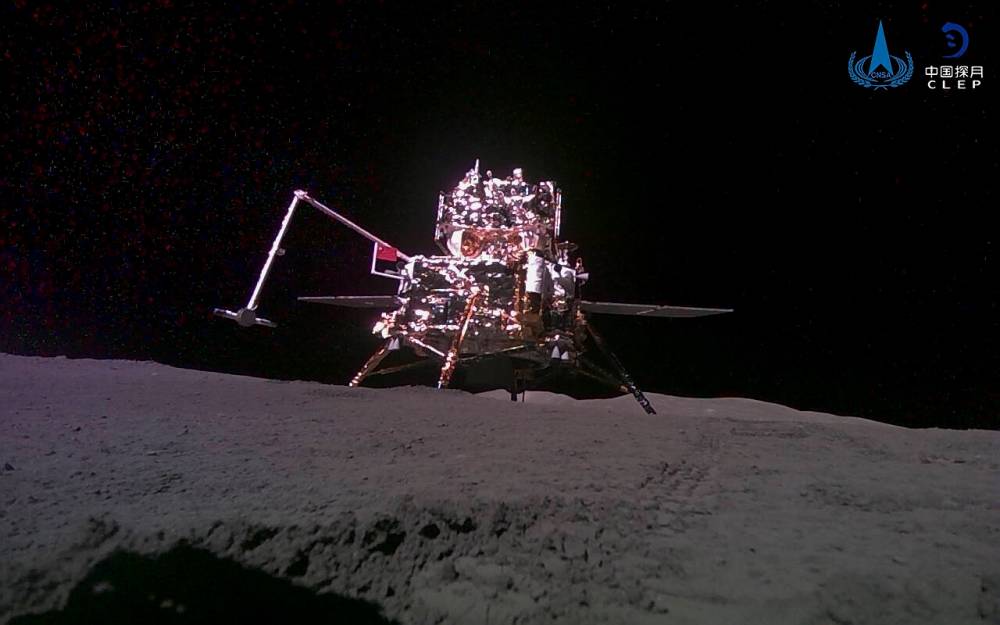Look to the stars this Space Week
NEELIN VIEWS
Advertisement
Read this article for free:
or
Already have an account? Log in here »
We need your support!
Local journalism needs your support!
As we navigate through unprecedented times, our journalists are working harder than ever to bring you the latest local updates to keep you safe and informed.
Now, more than ever, we need your support.
Starting at $15.99 plus taxes every four weeks you can access your Brandon Sun online and full access to all content as it appears on our website.
Subscribe Nowor call circulation directly at (204) 727-0527.
Your pledge helps to ensure we provide the news that matters most to your community!
To continue reading, please subscribe:
Add Brandon Sun access to your Winnipeg Free Press subscription for only
$1 for the first 4 weeks*
*$1 will be added to your next bill. After your 4 weeks access is complete your rate will increase by $4.99 a X percent off the regular rate.
Read unlimited articles for free today:
or
Already have an account? Log in here »
This week, known as Space Week, takes place on Oct. 4-10. The dates are in recognition of the Oct. 4, 1957 launch of the first human-made Earth satellite, Sputnik 1, thus opening the way for space exploration. It’s a global week marked by more than 90 different countries with over 15,000 events for this singular week alone, including school events, public events and outreach programs — all organized worldwide by schools, space agencies, planetaria, aerospace companies and many others!
Co-ordinated by the World Space Week Association, a non-profit with 43 years of space advocacy. For World Space Week 2025, the chosen theme is Living in Space. This theme explores humanity’s journey toward making space a habitat, emphasizing the innovative technologies, challenges and collaborative efforts that make this vision a reality. It’s one of the largest space events in the world.
One of the purposes of this week is to recognize achievements in the history of space travel. The first human to enter space was Yuri Alekseyevic Gargarin from the Soviet Union. His vehicle, Vostok 1, circled Earth at a speed of 27,400 km/h, with the flight lasting 108 minutes. Vostok 1’s re-entry was controlled by a computer. Unlike the early U.S. human spaceflight programs, Gagarin did not land inside of the capsule. Instead, he ejected from the spacecraft and landed by parachute.

This China National Space Administration (CNSA) handout image released by Xinhua News Agency, shows the lander-ascender combination of Chang’e-6 probe taken by a mini rover after it landed on the moon surface in June 2024. Columnist Sharon Bill tells us about Space Week — a celebration of milestones in space travel. (CNSA)
Before humans actually went into space, one of the prevailing theories of the perils of space flight was that humans might not be able to survive long periods of weightlessness. For several years, there had been a serious debate among scientists about the effects of prolonged weightlessness. American and Russian scientists utilized animals — mainly monkeys, chimps and dogs — to test each country’s ability to launch a living organism into space and bring it back alive and unharmed.
Some famous animals that went to space were Laika, who was a Soviet stray dog; she was the first living being to orbit the Earth in 1957 aboard Sputnik 2, though she did not survive the mission. The second was, Ham: in 1961, this chimpanzee successfully completed a suborbital flight for NASA’s Mercury program. Third, we had Félicette, the first cat in space, who was launched by France in 1963; she survived her 1963 sub-orbital space flight but was euthanized two months later by French scientists to study her brain for the effects of space travel.
What’s the purpose of World Space Week? According to worldspaceweek.org, its goals are to educate people around the world about the benefits that they receive from space, encourage the use of space for sustainable economic development, foster enthusiastic education and interest in science, and promote co-operation between nations through space outreach and education. So look to the stars this week as we examine humanity’s desire for exploration.
» Sharon Bill is a Grade 10 student at École secondaire Neelin High School.
